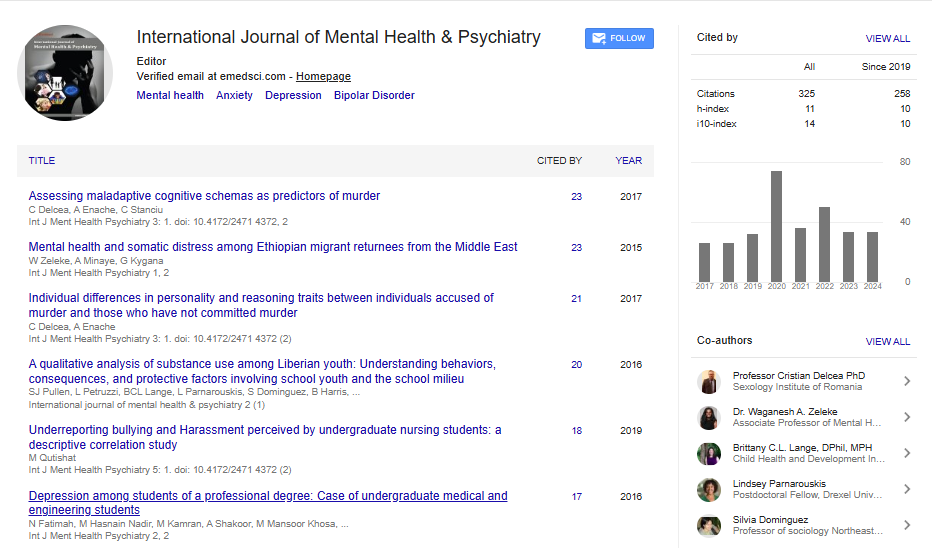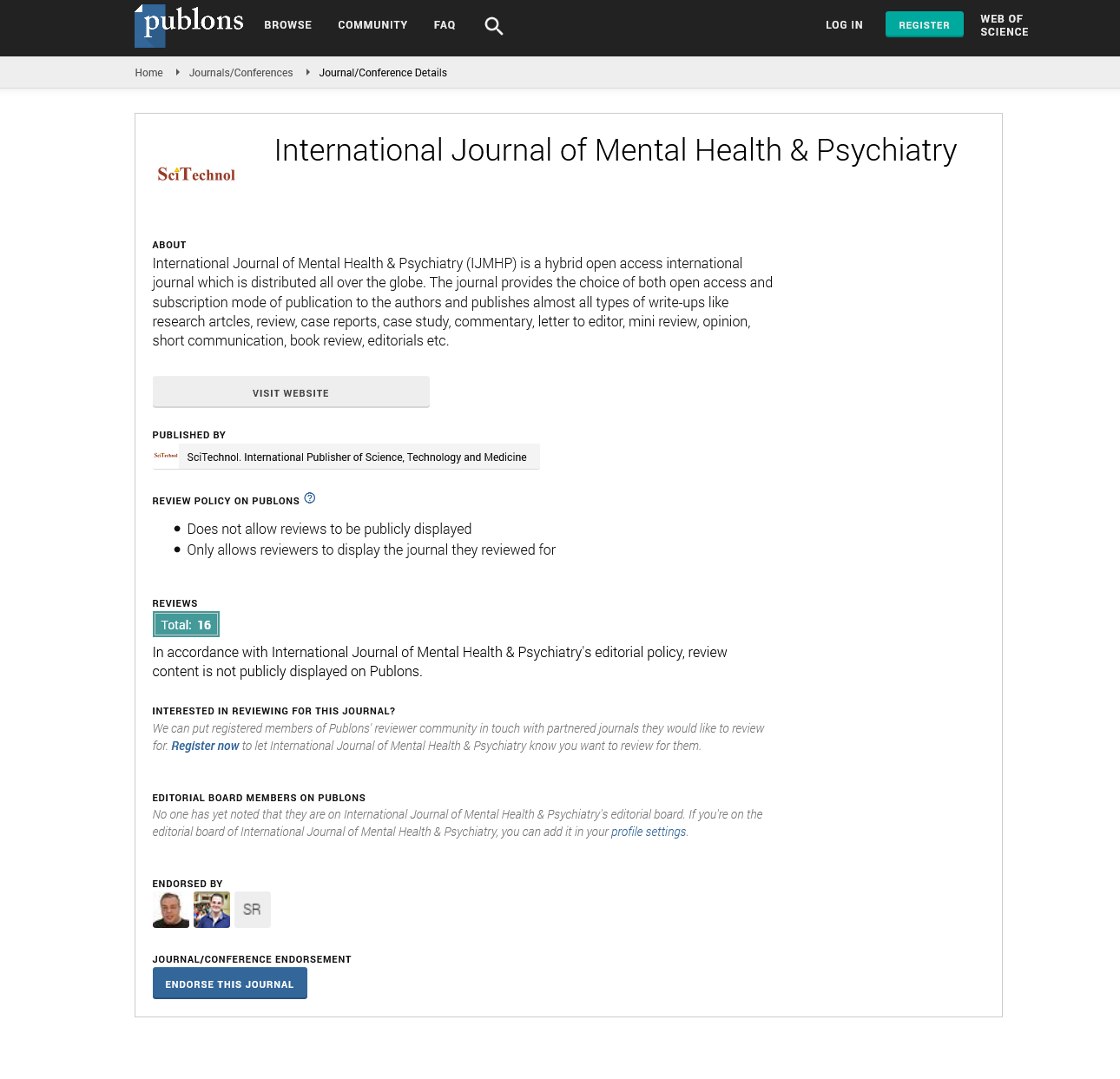Research Article, Int J Ment Health Psychiatry Vol: 3 Issue: 3
Correlates of Length of Hospitalisation in a Nigerian Psychiatric Hospital
Increase Ibukun Adeosun1,2*, Abosede Adekeji Adegbohun3 and Moyosore Ifeoluwa Maitanmi3
1Department of Medicine, Benjamin Carson Snr. School of Medicine, Babcock University, Ilishan-Remo, Nigeria
2Department of Psychiatry, Babcock University Teaching Hospital, Ilishan- Remo, Nigeria
3Federal Neuro-Psychiatric Hospital Yaba, Lagos
*Corresponding Author : Increase Ibukun Adeosun
Department of Medicine, Benjamin Carson Snr. School of Medicine, Babcock University, Ilishan-Remo, Nigeria
E-mail: dr.increase.adeosun@gmail.com; adeosuni@babcock.edu.ng
Received: August 09, 2017 Accepted: August 25, 2017 Published: August 30, 2017
Citation: Adeosun II, Adegbohun AA, Maitanmi MF (2017) Correlates of Length of Hospitalisation in a Nigerian Psychiatric Hospital. Int J Ment Health Psychiatry 3:3. doi: 10.4172/2471-4372.1000148
Abstract
Introduction: Globally, current trend favors brief psychiatric hospitalisation and community based mental health care. However, in many sub-Saharan African settings, community based mental health services are non-existent, mental health professionals are scarce, and out-of pocket payment for services is the norm. The extent to which these differences in health systems and sociocultural contexts impact on length of psychiatric hospitalization in sub-Saharan Africa compared to western countries is largely unknown.
Aim: To determine the correlates of length of hospitalisation in a Nigerian psychiatric Hospital.
Method: Using a retrospective cohort study design, clinical records of patients (n=260) hospitalised at a public psychiatric hospital in south-west Nigeria were reviewed. Relevant socio-demographic and clinical characteristics of the patients were extracted, based on extant literature on the subject. The outcome variable was the length of hospitalisation. Data was analysed with SPSS 16.
Results: The mean and median length of hospitalisation was 14.3 (± 9.6) weeks and 12 weeks respectively. Male gender (p=0.012), unemployment (p<0.001), single marital status (p=0.013), schizophrenic illness (p=0.009), longer duration of illness before presentation (p=0.001), history of previous hospitalisation (p<0.001) and prescription of depot medications (p=0.005) correlated with longer hospitalisation. On linear regression analysis, male gender (p=0.03), employment status (p=0.03) and depot medication (p=0.001) were independently associated with prolonged psychiatric admission.
Conclusion: Though brief psychiatric hospitalisation is the current paradigm globally, longer periods of hospital stay may be inevitable or functional in low-resourced settings with dearth of after-care community based mental health services.
 Spanish
Spanish  Chinese
Chinese  Russian
Russian  German
German  French
French  Japanese
Japanese  Portuguese
Portuguese  Hindi
Hindi 
